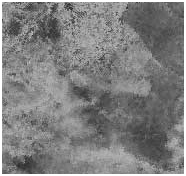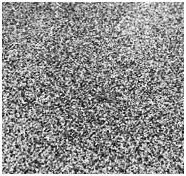Epoxy Flake Flooring Melbourne is a decorative flooring system that involves the application of epoxy resin with coloured flakes or chips on top. The flakes create a multi-dimensional, speckled appearance that adds texture and visual interest to the floor.
Difference between Epoxy Flake Flooring Melbourne and Polished Concrete
The main difference between flake flooring Melbourne and polished concrete lies in their appearance, installation process, and maintenance requirements. Polished Concrete involves grinding and polishing the concrete surface to achieve a smooth, glossy finish, while Epoxy Flake Flooring involves applying epoxy resin and decorative flakes to create a textured and colourful surface.
Residential
Epoxy Flake Flooring is popular for garage floors, basements, and even living spaces due to its durability, stain resistance, and decorative options.
Commercial
It is suitable for commercial spaces such as retail stores, restaurants, and showrooms, where a visually appealing and durable flooring solution is required.
Example: A homeowner may choose Epoxy Flake Flooring in Melbourne for their garage to enhance the space’s appearance, protect the concrete from stains and damage, and create a slip-resistant surface.
Polished Concrete
Residential
Polished Concrete is commonly used in high-end homes where a sleek and modern aesthetic is desired. It can be applied to various areas like living rooms, kitchens, and bathrooms.
Commercial
Polished Concrete is suitable for commercial spaces such as offices, hotels, museums, and retail establishments, where a polished and sophisticated look is desired.
Example: An art gallery may opt for Polished Concrete flooring to create a clean and polished surface that complements the exhibited artwork and provides a durable and low-maintenance flooring solution.
Installation Process
1. Epoxy Flake Flooring in Melbourne
Surface Preparation: The concrete surface is cleaned, repaired, and properly prepared to ensure proper adhesion of the epoxy coating. Before applying the epoxy flake flooring in Melbourne, the concrete surface needs to be thoroughly cleaned and prepared.
This typically involves removing any existing coatings, dirt, grease, or stains from the surface. Depending on the condition of the concrete, repairs may be required to fix cracks, spalling, or other imperfections. Proper surface preparation is crucial to ensure optimal adhesion of the epoxy coating and long-lasting performance of the flooring system.
Primer Application: A primer is applied to the prepared surface to enhance adhesion. Once the surface is prepared, a primer is applied to enhance the adhesion of the epoxy coating. The primer creates a bond between the concrete substrate and the subsequent layers of epoxy. It helps to prevent issues such as delamination and provides a strong foundation for the epoxy system to adhere to.
Epoxy Coating Application: Multiple layers of epoxy resin are applied, followed by the broadcasting of decorative flakes onto the wet epoxy. After the primer has cured, the first layer of epoxy resin is applied to the prepared surface. The epoxy resin is spread evenly using a roller or squeegee, covering the entire area.
Multiple layers of epoxy may be applied, depending on the desired thickness and durability. While the epoxy is still wet, decorative flakes are broadcasted onto the surface. The flakes come in various colors and sizes, allowing for customization and creating a visually appealing appearance.
Topcoat Application: A clear topcoat is applied to seal and protect the flakes, providing a glossy finish. Once the epoxy and decorative flakes have been applied, a clear topcoat is applied to seal and protect the flakes. The topcoat acts as a protective layer, enhancing the durability and longevity of the flooring system.
It provides a glossy finish that enhances the aesthetic appeal of the epoxy flake flooring. The topcoat also offers additional resistance to chemicals, stains, and UV damage, ensuring the floor remains in optimal condition even with regular use.
2. Polished Concrete
Grinding and Polishing: The concrete surface is ground using diamond abrasives to remove imperfections and achieve the desired level of smoothness and gloss. The first step in the process of polishing concrete is grinding the surface using diamond abrasives. This involves the use of specialized grinding machines with diamond-embedded segments.
The grinding process removes any surface imperfections, such as rough patches, stains, or coatings, and prepares the concrete for the polishing stage. The level of grinding can be adjusted to achieve the desired level of smoothness and gloss.
Densifier Application: A chemical densifier is applied to harden the concrete and increase its resistance to staining and wear. After grinding, a chemical densifier is applied to the concrete surface. The densifier penetrates into the pores of the concrete, reacting with the calcium hydroxide present in the concrete to form a hard crystalline structure.
This process increases the density and strength of the concrete, making it more resistant to staining, wear, and dusting. The densifier also helps to enhance the overall durability of the polished concrete surface.
Polishing Resin Application: Polishing resins are applied in multiple stages to achieve the desired level of sheen and clarity. Once the concrete surface has been densified, a series of polishing resins are applied in multiple stages. Each stage uses progressively finer grits of polishing pads or discs to achieve the desired level of sheen and clarity.
The polishing resins, combined with the mechanical action of the polishing equipment, help to refine the surface, remove any remaining scratches or marks, and create a smooth and reflective finish. The number of polishing stages may vary depending on the desired level of shine.
Optional Stain or Dye Application: Stains or dyes can be applied to enhance the color and pattern of the concrete surface. In some cases, stains or dyes may be applied to the concrete surface to enhance its color and pattern. Stains penetrate into the concrete and react with its components to create a permanent color change.
Dyes, on the other hand, are surface-applied and provide a wide range of color options. Stains and dyes can be used to create decorative effects, such as marbling, mottling, or intricate patterns, adding a unique aesthetic appeal to the polished concrete.
Final Sealing: A protective sealer is applied to enhance durability and provide resistance against staining. To protect the polished concrete surface and enhance its durability, a final sealer is applied. The sealer acts as a protective barrier, preventing liquids, chemicals, and stains from penetrating the concrete.
It also helps to enhance the color and shine of the polished surface. The type of sealer used may vary depending on the specific requirements of the project, such as the desired level of gloss, slip resistance, or chemical resistance.
Benefits of Epoxy Flake Flooring over other types of flooring
Durability
Epoxy Flake Flooring is highly durable, resistant to chemicals, stains, and impact. Epoxy Flake Flooring is renowned for its exceptional durability. The epoxy resin used in the flooring system forms a strong and resilient surface that can withstand heavy foot traffic, impacts, and abrasions. This makes it an ideal choice for high-traffic areas such as garages, warehouses, and industrial facilities. The coating acts as a protective barrier, preventing the underlying concrete from chipping, cracking, or deteriorating over time. Additionally, epoxy is resistant to chemicals, including oils, solvents, and cleaning agents, ensuring that the flooring maintains its integrity even in harsh environments.
Customization
It offers a wide range of color options and decorative flakes, allowing for unique designs and customization. One of the major advantages of Epoxy Flake Flooring is its versatility in terms of design and customization. The flooring system allows for a wide range of color options and decorative flakes, giving you the freedom to create unique and visually appealing designs.
Whether you prefer a subtle, monochromatic look or a vibrant, multi-colored surface, epoxy flakes offer endless possibilities. The flakes are available in various sizes and colors, allowing you to mix and match to achieve the desired effect. This level of customization enables you to create a flooring solution that complements the overall aesthetic of your space, whether it’s a residential garage, a retail store, or a commercial showroom.
Slip Resistance
The textured surface of Epoxy Flake Flooring provides enhanced slip resistance, making it suitable for areas prone to wet conditions. Safety is a crucial consideration for any flooring choice, especially in areas prone to wet conditions or spills. Epoxy Flake Flooring excels in providing enhanced slip resistance due to its textured surface.
The incorporation of decorative flakes adds texture and grip, reducing the risk of slips and falls. This makes it particularly suitable for environments such as kitchens, bathrooms, and entryways, where water, oil, or other liquids may be present. The slip-resistant properties of epoxy flakes help create a safer working or living environment, providing peace of mind to occupants and visitors alike.
Easy Maintenance
The seamless surface of Epoxy Flake Flooring is easy to clean and maintain, requiring minimal effort and cost. Maintaining Epoxy Flake Flooring is relatively hassle-free, thanks to its seamless and non-porous surface. The smooth finish prevents dirt, dust, and debris from getting trapped, making it easy to clean and maintain. Regular maintenance typically involves sweeping or vacuuming to remove loose particles, followed by mopping with a mild detergent solution to keep the surface clean and fresh.
Unlike some other flooring options, epoxy does not require waxing or polishing to retain its shine. The durability of epoxy also means that it is less prone to staining, making spills and stains easier to clean up compared to porous surfaces like unsealed concrete or certain types of tiles. This ease of maintenance translates to cost savings over the lifespan of the flooring, as minimal effort and resources are needed to keep it looking its best.
Overall, Epoxy Flake Flooring and Polished Concrete offer distinct advantages and are suitable for different applications. The choice between the two depends on the desired aesthetics, functionality, and specific requirements of the space. Consulting with flooring professionals can help determine the most suitable option for each individual project.












